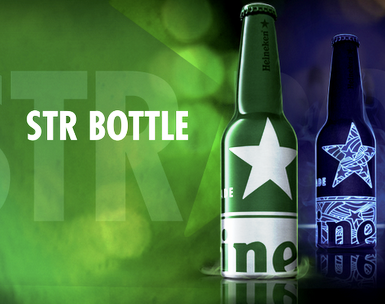The article is written by Sara Jones, Creative Director at brand development and packaging design agency Anthem Worldwide, part of Schawk, Inc.
The power of packaging to tell a story and engage with consumers is sometimes undervalued. And yet when a product is on the shelf, sitting next to its rivals, this is the point when all of a brand’s marketing and advertising comes together; the moment of truth when the shopper’s choice will decide whether investment in the brand really worked. Even as more and more shopping shifts online, the product image will always be the last thing a customer sees before making their selection.
Good packaging therefore needs a big, compelling brand idea, built from the shelf out, which also informs the other critical brand touch points that the consumer and shopper encounter on the journey to purchase. However, whilst the brand idea, and how well that is portrayed on pack, is going to be the most important element of successful packaging, it’s important to keep up to date with the techniques and technology that can enhance those ideas. These can lift your brand above the others as the shopper scans the shelf, basket in hand.
Photo: Heineken STR bottles introduced in 2010
Below is my round up of the top five print innovations which have the potential to create real standout, as long as they’re used to enhance – rather than ‘be’ — the brand idea:
1. Ink technology has come on a long way in recent years, but so far brands have only scratched the surface of what it can do to create excitement and differentiation for packaging. The beer sector has made inroads here, with its use of ink technology to provide an added-value reason for buying a specific brand of beer.Coors Light bottles and cans featured a temperature sensitive label using thermochromic ink which turned blue when the can was at the right temperature – ensuring that consumers always enjoy the perfect beer. Heineken’s limited edition bottle revealed different messaging and imagery when viewed under UV light. Designers need to understand the benefits and shortcomings of ink technology, but it has great creative potential.
2. Screen printing technology makes it possible to print thin film batteries onto a variety of substrates including paper, plastic, foil and textiles. Whilst expensive at the moment, as the price falls printed batteries offer an exciting opportunity to make a brand come to life before the pack is even opened. This could include smell, sound and visual elements that would enable a brand to ‘own’ a sensory brand equity. Imagine a popcorn pack which makes the popping sound when you put it in your trolley, smells of the delicious product inside and on which pictures of the corn kernels turn into popped ones at the till. This would be true packaging theatre. Some years ago, spread brand Vitalite used on-pack batteries which were placed invisibly in 15 winning tubs to play the Vitalite jingle when the winner lifted the lid – a great way to tell someone they’d won a Caribbean holiday and an early taste of things to come.
3. They’re still viewed as fairly new technology, but QR codes have actually been around for nearly 20 years, originally created and utilised by the Toyota Group to track automotive parts. However, in recent years we’ve seen QR codes dotted all over the place – used for any manner of applications by a wide variety of brands. It seems inevitable that most FMCG products will eventually bear a QR on pack. The opportunities for content that sits behind this code are endless. Packaging tends to have limited space to create a brand story, so the ability to use digital technology to effectively ‘extend’ packaging, have the room to tell the story behind the brand and make the product come alive is incredibly powerful. Their use is still to be fully exploited on pack but they can be used in so many creative ways, such as providing recipes, talking about the provenance of the brand, variable price promotions etc.
4. There have been interesting advances and debate around radio-frequency identification (RFID) whereby a tagging device is inserted on packaging to allow products to be individually monitored and tracked. As the development of smart fridges continues, RFID packaging is the facilitator which will make it possible for the fridge to re-order products as they start running out or reach their sell-by date. Similarly, it is being researched as a means to get rid of the supermarket till – as you walk out the store your bill is instantly created and paid for through your account. This has created excitement in the retail world but also much debate around privacy.
5. Finally, there is augmented reality which spans the divide between print and digital, with packaging becoming the launch pad into digital content in a ‘live’ environment. This is one of the most exciting innovations in packaging we’ve ever seen, offering almost limitless potential to bring products to life and interact with the consumer. It can bring brand values to life in a way that would be prohibitively expensive on physical packaging and, when linked to a promotional mechanic, it can create powerful reasons for brand engagement. Few brands have yet got to grips with what it can and can’t do and it won’t be relevant for everyone. However, our advice to brand owners is to experiment and see what it can do.
About the Author
Sara Jones is Creative Director at brand development and packaging design agency Anthem Worldwide, part of Schawk, Inc.

